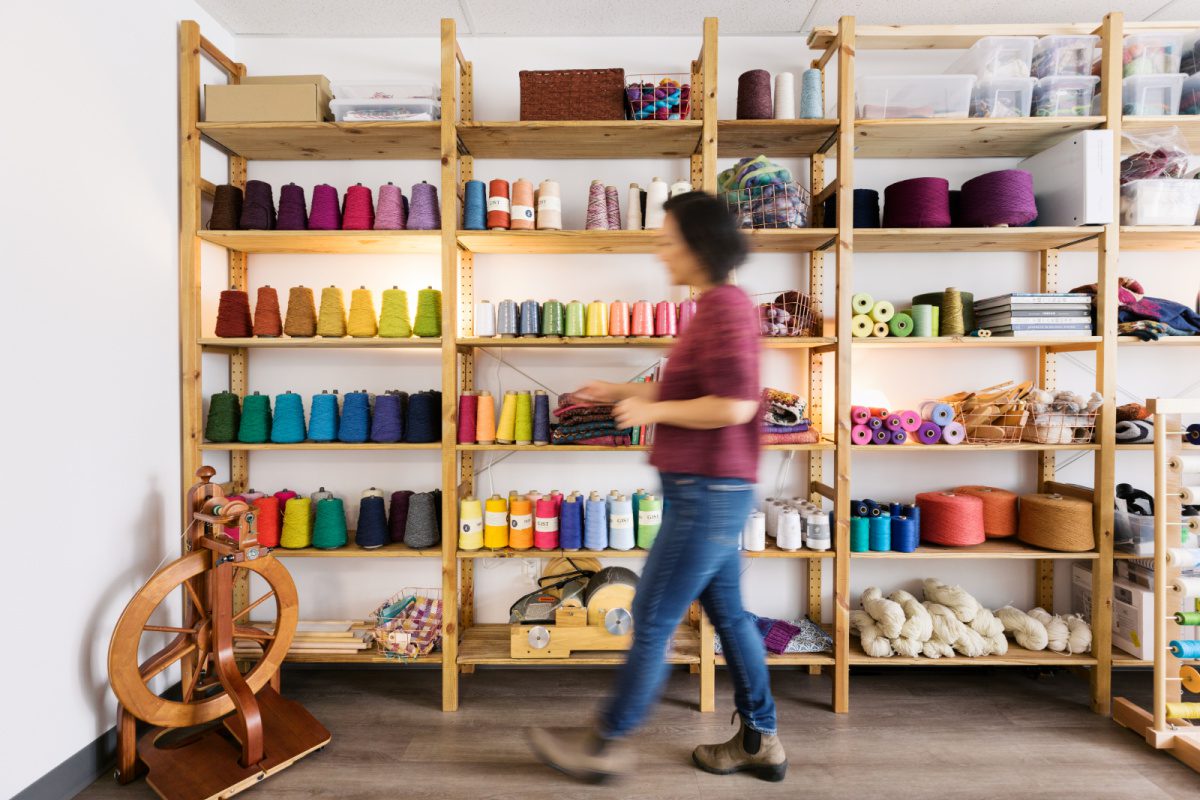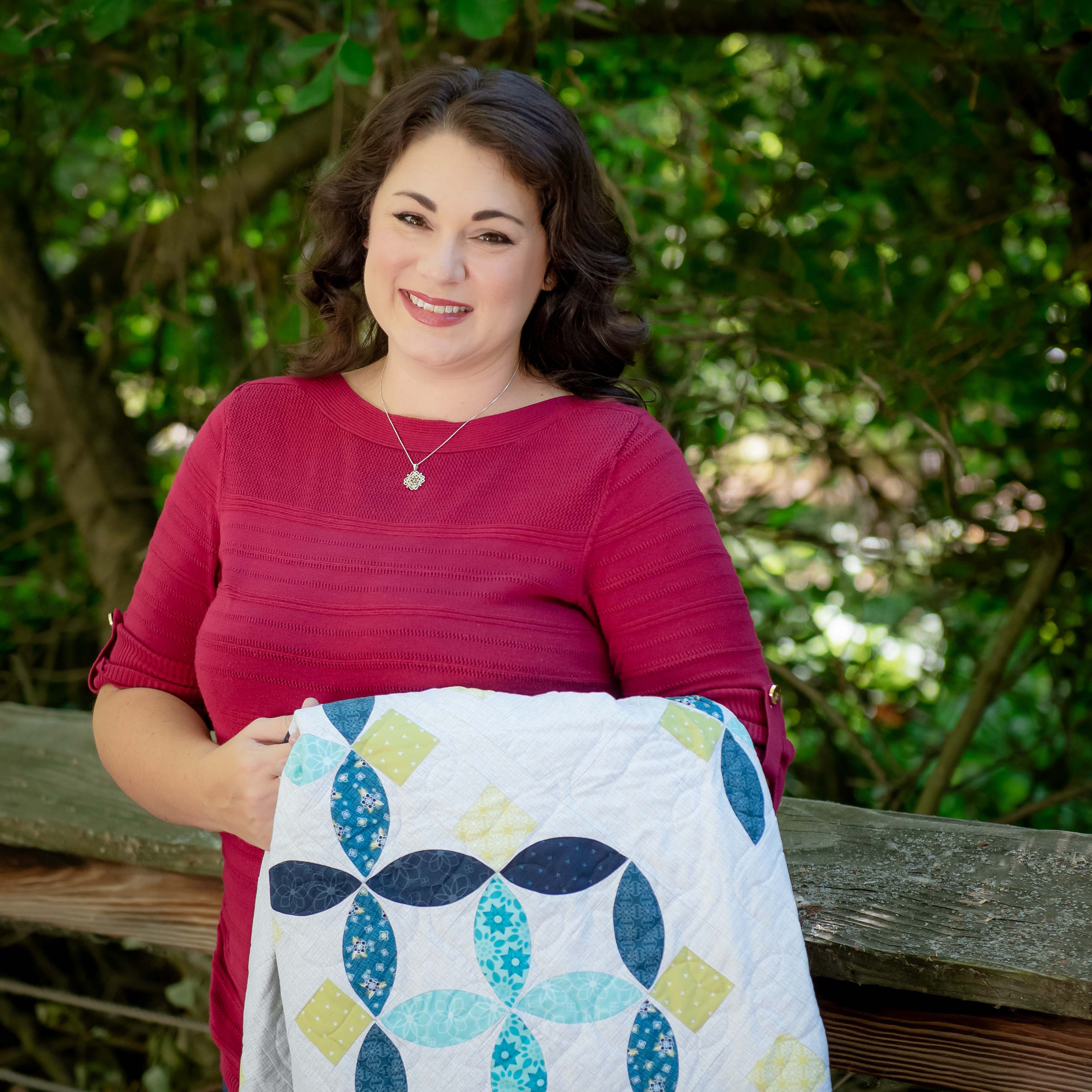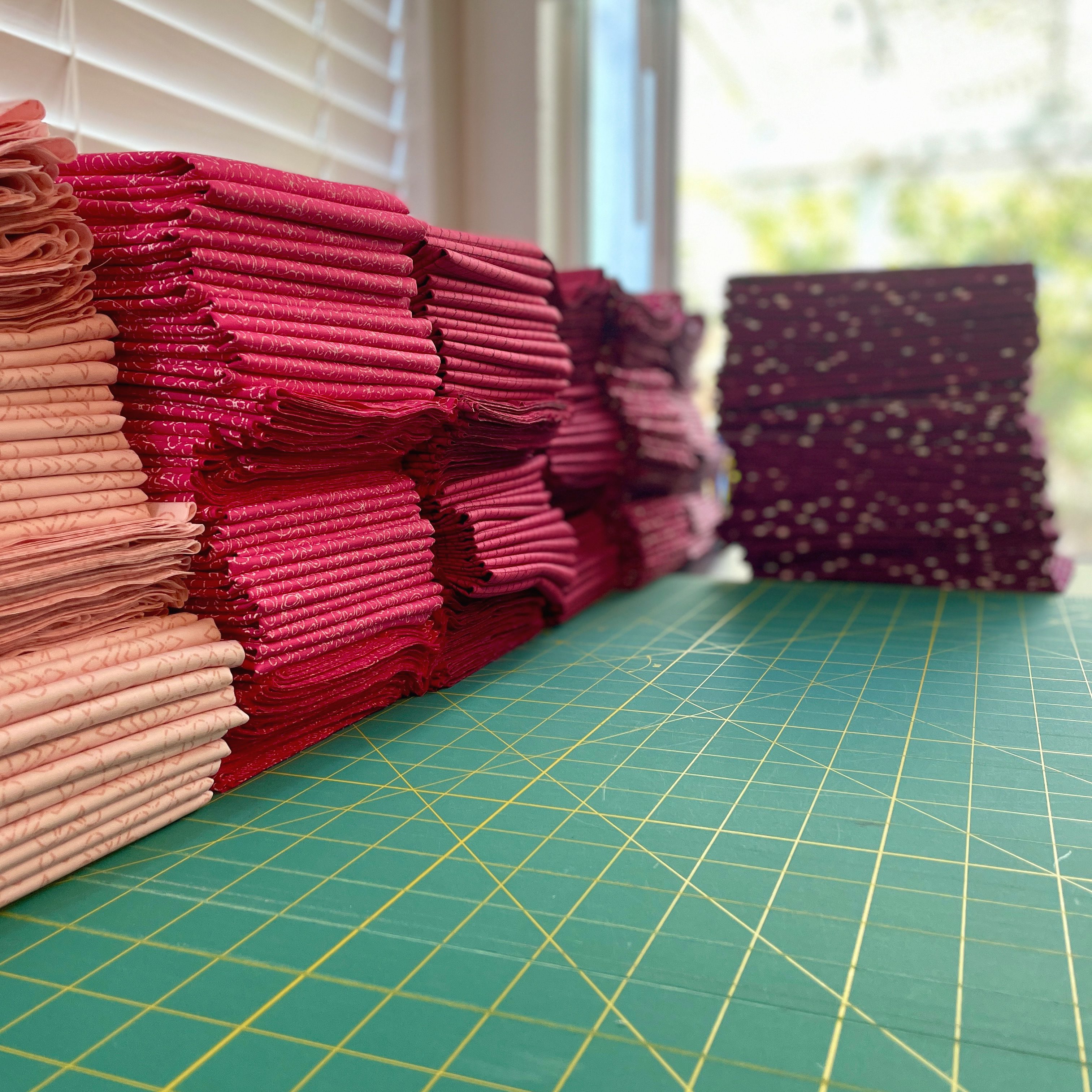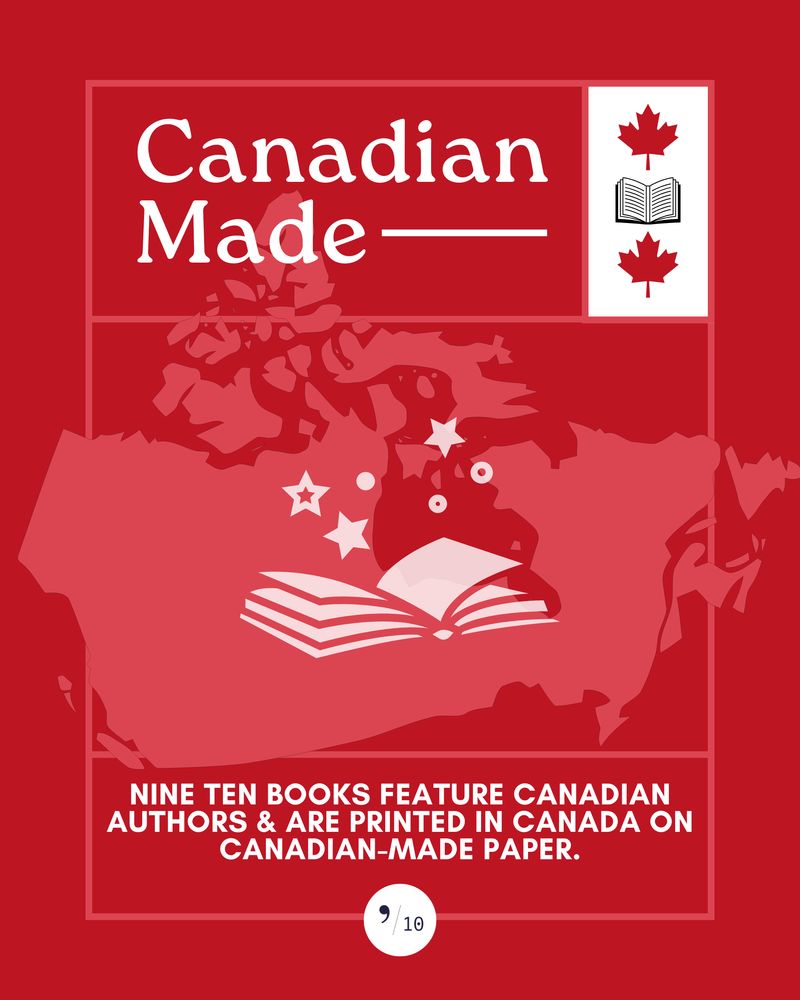
Felicia Lo of Vancouver, Canada-based SweetGeorgia Yarns, is keeping up with tariff information by reading both US and Canadian news outlets. She says talking about tariffs makes people upset and angry.
Photo courtesy of SweetGeorgia.
If there’s one common (not to mention frequently recurring) theme about tariffs right now it’s confusion. Why all the uncertainty? Because the related goalposts keep moving and shifting. As the situation between Canada and the United States has been the most heated, this piece focuses on those tariffs.
For starters, what are tariffs?
Kim Werker, who lives in Vancouver, Canada, has been heavily researching tariffs to ensure her small press, Nine Ten Publications, runs smoothly. When I asked her to explain tariffs to me like I was five, she responded: “A tariff is an import tax. Unlike a sales tax, which many regions apply to any purchase made on certain kinds of goods. An import tax is imposed when goods are imported into a country. So when the United States imposes a blanket tariff on all Canadian goods, it means that all goods coming into the United States from Canada will be taxed on arrival, so the person importing them in the United States will be charged the tariff.”
She adds, “for a craft shop in the United States, this will affect goods they import from elsewhere because the tariff is also being applied to Chinese goods. So, whether it’s tools or notions that are manufactured in China or books that are manufactured in Mexico or Canada, those items will be taxed to a very high degree by a small business that operates with very thin margins.”
How do shops receiving goods from a tariffed country handle the situation? Kim notes that “either they stop importing goods from those three countries because they can’t afford it, or they pass the tax on to consumers, which makes it more expensive to buy those goods for the customers of that store.”
Additionally, countries that the United States imposes tariffs on may in turn put tariffs on American goods entering their own country in retaliation, which are called retaliatory tariffs. Related news on retaliatory tariffs is also shifting. While this article includes thoughts from small business owners, please keep in mind, that it’s not legal advice. If you need more detailed advice on what to do, an up-to-date legal professional may be your best bet.
Where can you find guidance online?
If you’re looking for more information, UPS has an updated tariff guide, and FedEx is sharing regulatory updates. If your business uses an online shopping or shipping platform, you can also check their related guidance. For example, Shopify has a Help Center page called “Understanding tariffs” with general information, and Etsy has a more detailed page called “Navigating Evolving Global Tariff Policies.” Additionally, the Etsy page includes links to government sources regarding tariffs for the United States, Canada, the European Union, and Mexico.
To add to the chaos, with things moving so fast, you could mail a package to a customer today and tariffs could go into effect before the package reaches the consumer. So what’s a small business owner to do?


Shelly Cavanna, owner of California-based Cora’s Quilts, says there’s a lot of misinformation circulating that can create a feeling of panic.
Photo courtesy of Shelly Cavanna.
Selling goods under $800? Meet the de minimus exemption
If you’re a small business trying to navigate this on your own, know you’re not alone. And if you’re a business that’s shipping items under $800, your shipped goods may meet the de minimis exception. As Kim explains, ” The de minimis exemption essentially made it so that imports under a certain value would be tariff-free, and that value is $800.” Kim continues, “All of the information when you send goods over the border, your shipping carrier requires you to enter in, where the goods were manufactured, what the tariff codes are, and you enter all of that in, and as long as the value of the goods is under $800, Bob’s your uncle, goods go across the border.”
Currently, while removing the de minimis exception has been threatened and briefly enacted for goods shipped to the United States from China valued at under $800, it’s still there in part because of the chaos it caused postal carriers, including a February pile-up of more than one million packages at JFK airport after only a few days.

Advice from other small business owners
Along with talking to Kim, I spoke with several other business owners to hear how they’re navigating the tariffs issue.
I talked to Felicia Lo of SweetGeorgia Yarns, a Vancouver, Canada-based hand-dyed knitting, yarn, and spinning fiber business that includes the School of SweetGeorgia, a subscription-based online education platform where people can learn fiber arts skills.
On the American side, I talked to Shelly Cavanna. Shelley is the founder and creative mind behind California-based Cora’s Quilts, which sells Shelley’s quilt patterns, cross-stitch patterns, textiles, and quilt books to the public, retailers, and wholesalers.
Small businesses may come in all shapes and sizes selling all manner of products, but through conversations with Kim, Felicia, and Shelley, some common themes emerged:
Advice for business owners navigating tariffs
1. Remember that there is a lot of confusion in all directions, especially for small businesses.
Kim: “Right now, we are way stronger together than we are sitting alone, running our solo businesses, freaking out. It helps to know that others are also freaking out, and it also helps to talk about things like even though none of those other business owners I had [a] call with two weeks ago had definitive answers about anything, having the conversation helped me sort things out. It gave me perspective on my own business and how it was different from theirs, and how I might navigate things differently.”
Shelley: “I’m trying to model patience and goodwill and finding the silver linings and just the understanding that with the constantly moving goalposts, we’re constantly having to pivot.”
2. Seek out reputable journalism sources vs. punditry or social media. That may mean seeking out several outlets to ensure you’re getting the most up-to-date information.
Felicia: “I am spending a lot of time reading the news from different news sources, both on the Canadian side and the US side. … I am kind of trying to avoid a lot of the tariff conversation on social media … All of this conversation makes people really upset and makes people really angry. It’s very emotional.”
Shelley: “There’s a lot of disinformation out there and a lot of panic and talking points that are not necessarily actuality. … If I hear a talking point in the news, if I’m listening to NPR on the way home or whatever, I try and verify it from a couple of sources.”
Kim: “I’ve chosen to ignore a lot of punditry because I can sort out how this is going to affect me. I need to know what’s coming and when, and then I have to sort out how to navigate that with my business.” To this point, she later adds, “I don’t need to become a global expert in the theory of import taxes. I just need to know what the tax is so I can start putting information into a spreadsheet so I can manipulate the information I do have that I have control over. And I think that’s the other part of it is, you know, accepting what I can control, right? And focusing on what I can.”
3. Embracing transparency may help weather the tariff storm.
Shelley: In a recent email to her Block of the Month Club program Canadian participants, Shelley said she has prioritized being open about the situation and gave them an out, noting, “Nobody could anticipate this. So if [the possible price increase due to tariffs] is too much for you let us know, and we’ll just agree to kind of part ways amicably. But if you agree to keep receiving your packages, you’re doing so knowing that at the time that I sent [this] email out, fabric wasn’t included in the 25% tariffs, but it seems like it changes, what’s included, and what’s not and how much every five minutes.”
Kim: “I think that the beauty of running a small business is that we’re relatively nimble if we let ourselves be so we can course correct as needed. And I have fallen back on something that I learned long before I started this business, which is that transparency is probably the greatest thing you can ever bring to a business.”
Advice for customers navigating tariffs
Kim: “Be patient and recognize that no small business in any area of North America that I can imagine, likes this. This is not being done by small businesses. This is being done to small businesses, and we have no control over it whatsoever.”
Felicia: “I think for buyers it’s always really important to look at what it is you value and what it is that you want to see in the world. I think that over the past couple of years, I’ve seen some of my favorite businesses close down, whether they’re yarn-related or not. I think that in this time where we have so much choice and we’re so saturated with choice, I think it’s really important to continue to support the businesses and companies and the brands and the shops that you want to see exist, like six months from now, a year from now, two years from now, because they may well not exist.”
Keeping track of tariff changes
If you’d like to keep track of what’s happening with tariffs, many news sites are listing tariff news and changes, like this timeline from Marketplace.

Betsy Greer
Contributor
Betsy Greer is a freelance writer, marketer and consultant who lives in Durham, North Carolina. She helps businesses demystify their communication efforts, build mission-aligned marketing strategies and create community-focused content. She also writes, speaks and teaches all about how textiles are a vehicle for healing, change and connection. You can find out about all those things (and more) at hellobetsygreer.com.

Thanks for sharing all this great information on tariffs. I own a very small online quilt fabric shop called Quilt Girls. I have been watching the subject of tariffs very closely because I am one of those businesses with a very small margin. Here is what I know: The quilting fabrics that I carry are made in Korea, China, and Pakistan. This information is printed on the end of each bolt. If you look at the bolts next time you shop for fabric, I am sure you will find where the fabric was made. I purchase these fabrics from a wholesale distributor located in Portland, Oregon. So far, costs have only slightly increased because the distributor has inventory in a warehouse. Prices are expected to increase as the distributor sells the current inventory and restocks with new inventory. As the costs for the distributor increase, my costs will increase, and I will have to raise the price of fabrics to customers. Are fabrics going to be included? I thought they were, but maybe not? Are there any ideas on how high prices could go? With so much trickle-down, I am worried that fabric prices could cost the customers an additional 25% or more. Any thoughts?
Hi Patricia!
And thanks for your comment!
I think your best bet here is to keep communication open with your Portland distributor — as it sounds like you might be doing! — as they’re best suited to tell you how tariffs are affecting their inventory. From what I can tell, all goods over $800 going from China to the US are presently affected by tariffs. (However, this could change at any time!)
Given all the moving parts regarding tariffs, remember that they may be unable to tell you much, including what prices will be in the future or what prices may potentially go up to. (Nerve-wracking, I know!)
Circling back to my comment given the tariff news this afternoon!
Reuters has a list of countries and tariff rates, which may be helpful: https://www.reuters.com/world/us/trump-unveils-global-reciprocal-tariffs-2025-04-02/